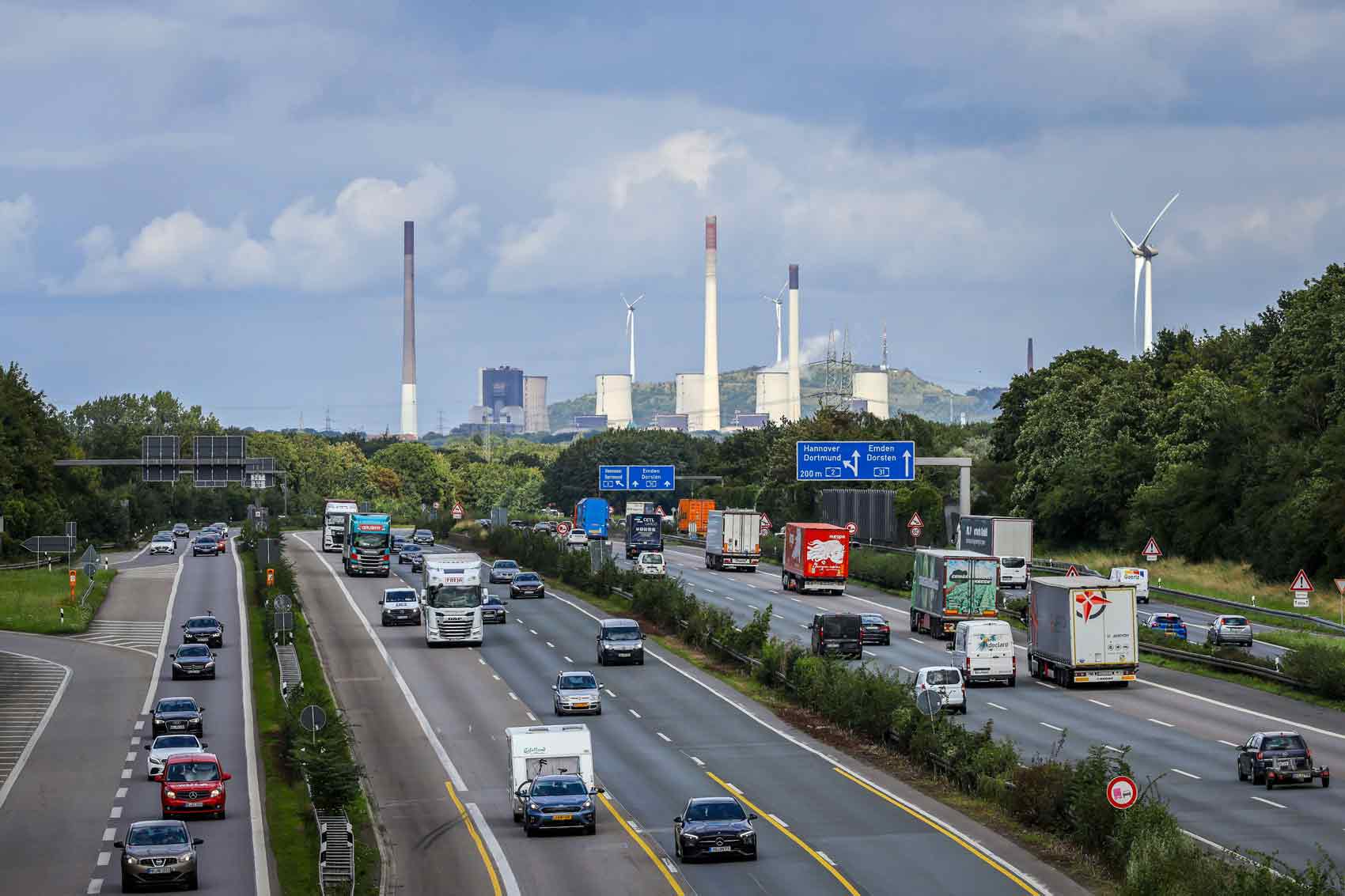Florence Nightingale knew the benefits of fresh air. The pioneering nurse, renowned for her work during the Crimean war, was adamant that fresh air helped injured soldiers recover faster, and improved overall health and wellbeing. Today’s health experts are equally effusive, and scientists are continuing to discover the health advantages of breathing clean air.
On the flip side, there is evidence that air pollution is associated with a string of adverse health conditions. Even low levels of air pollutants harm health, which is why the World Health Organisation (WHO) set stringent new targets on air quality in September 2021 – targets the European Union is failing to meet.
“Ninety-six per cent of people in the EU are still exposed to unsafe levels of air pollution,” Emma Bud, a lawyer at the environmental law group ClientEarth, tells The Parliament. “The current air quality laws are more than 10 years old, with the result that the existing legal air pollution limits in the EU are now five times greater than the scientific recommendations of the WHO.”
Air pollution limits in the EU are now five times greater than the scientific recommendations of the WHO
Air pollution is a mix of gases (nitrogen dioxide, sulphur dioxide and carbon monoxide) and particulate matter (microscopic solid or liquid particles suspended in the air). It comes from many sources and can be human-made – such as from industrial chimneys, traffic exhausts, or agricultural practices – or natural, from sea spray or desert dust.
It’s an issue that has been taxing EU officials since 2008, when the Ambient Air Quality Directives (AAQD) were established to set specific air quality standards and emission limits for various pollutants.
The directives form the cornerstone of EU legislation aimed at regulating and improving air quality across Member States. But despite improvements in recent years, increasing urbanisation, industrialisation and transportation means the air quality in many regions of the EU has fallen below acceptable standards, posing significant health risks to the population.

“Air quality is the biggest environmental threat to our health, causing approximately 300,000 premature deaths per year in the EU alone,” Javi López, a Spanish MEP with the S&D, tells The Parliament. “It also contributes to a long list of debilitating diseases and medical conditions, including cardiovascular disorders, chronic respiratory diseases, stroke, cancer, diabetes and dementia.”
It’s a view backed by the European Environment Agency (EEA). Its research shows the mortality burden associated with air pollution remains high in Europe, with 238,000 premature deaths associated with fine particulate matter (PM2.5) and 49,000 premature deaths associated with nitrogen dioxide (NO2) in 2020.
However, efforts are under way to address these challenges. In October last year, the European Commission proposed revisions to the AAQD. The Commission’s changes seek to align EU air quality standards more closely with WHO recommendations; improve the legislative framework in relation to penalties, and public information; and better support local authorities in achieving cleaner air through strengthening air quality monitoring, modelling and plans.
The revisions are part of the European Green Deal. And while the move to improve the EU’s air quality standards has been welcomed, some fear the proposals don’t go far enough.
“Revising the ambient air quality laws is a once-in-a-generation opportunity to protect people’s health,” Bud tells The Parliament. “The Commission’s proposal was a good step in the right direction, but a big, missed opportunity is that it did not fully align legal air pollution limits with the WHO’s recommendations.”
The Commission is proposing to cut the annual limit for PM2.5 by more than half. An ambitious target but, at 10µg/m³, still twice as high as the 5µg/m³ level recommended by the WHO. Similarly, while the WHO has set a guideline of 10µg/m³ for NO2, the Commission is proposing 20µg/m³.
The reason for the difference may lie in a briefing document prepared by the European Parliamentary Research Service. The author, Ekaterina Karamfilova, refers to an EEA report from 2020 to explain the disparity between EU air quality standards and the WHO air quality guidelines.
“First, the air quality reference values for a number of pollutants, defined by the WHO, are intended as policy guidance only, while the EU standards, as defined by the AAQD, are mandatory,” she says.
Air quality is the biggest environmental threat to our health
“Secondly, the WHO guidelines are based solely on health considerations, while the EU standards reflect broader considerations, such as technical feasibility and the political, economic and social aspects of achieving these standards. This explains why, for certain pollutants, the EU co-legislators opted for weaker standards than those recommended by the WHO.”
While they may not be completely in sync, the Commission insists its proposed revisions are seeking to close the gap, not least in calling for improved access to legal redress.
Current EU law does not include provisions for citizens to claim compensation for health damage due to air pollution. “The revision will ensure that people suffering health damages from air pollution have the right to be compensated in the case of a violation of EU air quality rules,” the Commission states.
As well as introducing more effective penalties, the proposed updates to the AAQD encourage preventative action. “New legislation will support local authorities by strengthening the provisions on air quality monitoring, modelling and improved air quality plans,” the Commission says.
However, despite these improvements, not everyone is convinced. “The Commission’s proposal has some concerning loopholes in the legal framework that would allow authorities to perpetually postpone achieving the new legal limits,” Bud tells The Parliament. And her concerns have been exacerbated by the European Council’s stance on the AADQ changes.

As well as laying out plans to push the EU closer to its target of zero-pollution for air quality by 2050, the Commission’s proposal sets out more stringent EU air quality standards to be attained by 2030 in the form of limit and target values that are closer to WHO guidelines. The Council wants to add some flexibility for Member States in their efforts to implement the directive.
For example, it suggests that Member States with a lower national GDP per capita than the EU average and with a higher share of low-income households, where modelling application results indicate that the limit values cannot be reached within the attainment date, can ask for a postponement of up to 10 years from the deadline, stretching it to 1 January 2040.
Bud is not impressed. “With its negotiating position, the Council has made clear its disregard for Europeans’ health,” she says. “Although on the face of it, the Council has agreed with the Commission’s proposed legal limits, it has introduced wide-ranging exemptions which mean people could be exposed to toxic air until 2040 or even longer.
“Especially shocking is the proposal that people from socio-economically disadvantaged communities must wait to breathe healthy air,” she adds. “This version of the law would utterly fail to protect Europeans, and be a stain on the bloc’s public health record.”
Revising the ambient air quality laws is a once-in-a-generation opportunity to protect people’s health
Then there’s the matter of how to enforce the AAQD. While López sees the Commission’s proposal as a positive step towards cleaner air, he warns that putting it into practice involves a complex array of challenges. “These range from ensuring a unified approach to the measurement and representativeness of data, to finding a balanced integration of policies that affect air quality,” he says. “Securing compliance and commitment at the local and regional levels demands sufficient resources and strong political will. Addressing these issues is critical to effectively improve and maintain air quality across the EU.”
If Member States are to improve air quality, they will need to implement measures to upgrade existing infrastructure, reduce emissions, and invest in cleaner technologies across various sectors, including transportation, industry and agriculture – all of which requires significant effort. Moving EU standards towards WHO guidelines could rub up against other obligations, such as alleviating cost-of-living pressures. Is now the right time?
Norbert Lins, an MEP from Germany’s Christian Democratic Union, thinks not. “In the last couple of months, I [have] repeated that the air quality in the European Union continuously improved in the last few decades. Therefore, there is no urgency to drastically lower limit values towards the WHO guidelines,” he tells The Parliament. “That does not mean that I am against continuous improvement of air quality. It rather means that we have to have a realistic approach.”
Lins, who chairs the Committee on Agriculture and Rural Development, continues: “We have to keep in mind that the WHO guidelines only focus on the health aspect, but do not take into consideration the rest of the factors such as mobility, industry, etc. That is why we, as the lawmakers, have to strike a balance between all these factors,” he says. “When we move towards the WHO guidelines in the upcoming years, that would mean the following for each individual: driving bans or the shutdown of industries and construction work. Instead of bans, we should give incentives for low-emission activities.”
For Nicolae Ștefănuță (Greens/EFA), however, what Lins describes as “the health aspect” is paramount. “We all are trying to protect the health of the citizens, but some political parties think about the immediate economic costs of implementing the legislation,” the Romanian MEP and member of the Subcommittee on Public Health tells The Parliament. “Ideologically, for me, the health of our citizens must come first, the number one priority. So the sooner the implementation starts, the better it will be.”
Sign up to The Parliament's weekly newsletter
Every Friday our editorial team goes behind the headlines to offer insight and analysis on the key stories driving the EU agenda. Subscribe for free here.